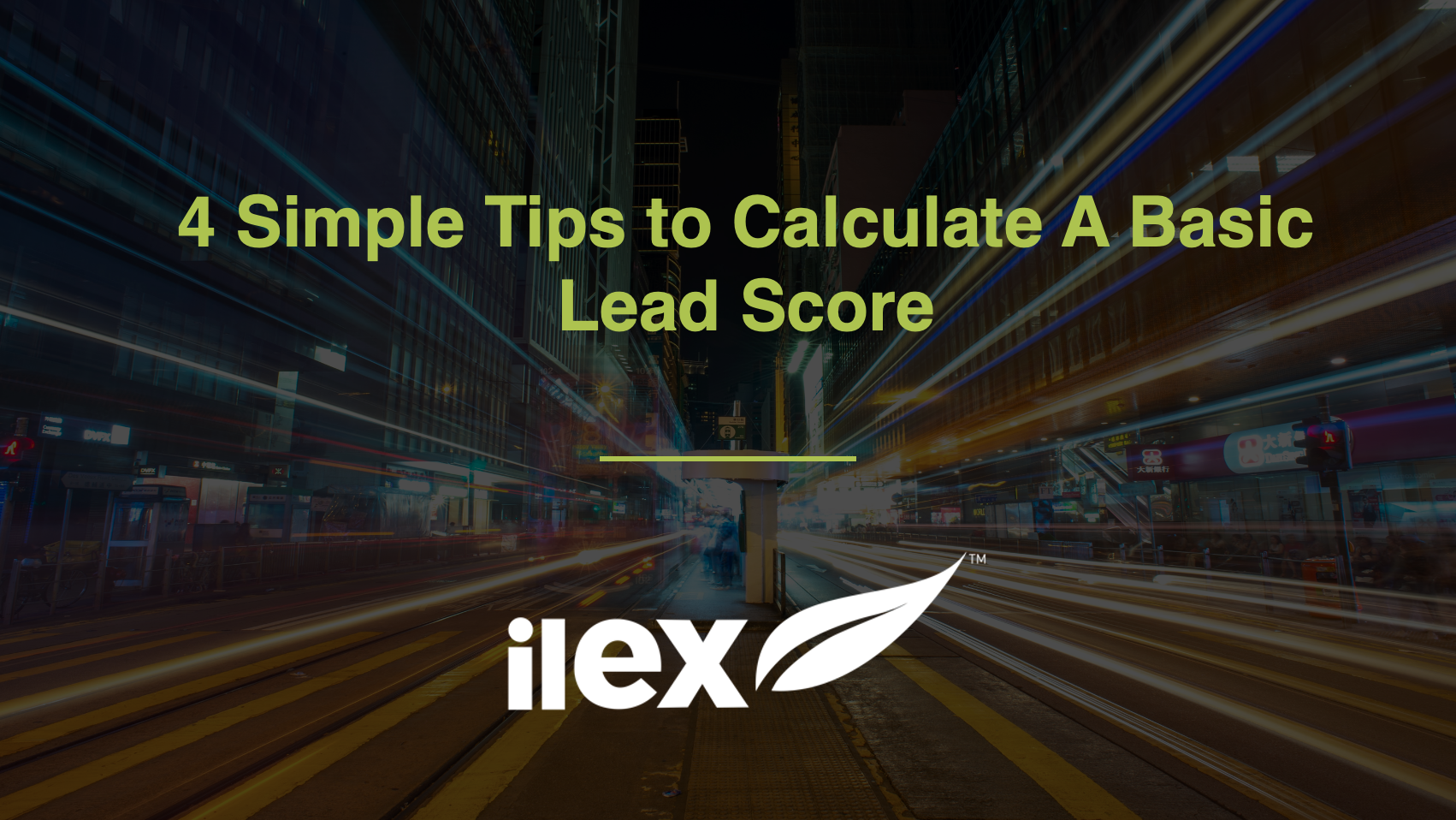In our previous blog post ‘5 Data Points B2Bs Should Be Collecting to Increase Sales’, we covered the 5 types of data that B2B companies should be using, from email engagement to demographic information, to determine who becomes a sales qualified lead (SQL) from a marketing qualified lead (MQL). The process of lead scoring is important for B2B tech and telecom companies for three reasons; to identify valuable customer prospects, recognise which contacts need to be focused on, and determine which visitors don’t fit in with your target audience.
Now you know what data you should be collecting as a company, you need to understand how to calculate this information correctly. Pursuing SQLs can increase sales productivity and guarantee a better return for your business. There are many ways to calculate a lead score. Here at Ilex, we’ve put together 4 simple tips to help you start your lead scoring journey to increase sales and gain strong customer relationships.
Calculate your lead-to-customer conversion rate
Lead-to-customer conversion rate, also known as sales conversion rate or lead conversion rate, is the proportion of qualified leads that result in actual sales. This is useful for understanding the overall performance of your company and where you need to improve your sales techniques.
It is equal to the total number of conversions divided by the number of leads you’ve gained and then multiplied by 100. So, say you had 100 leads, and 20 of them became new customers, your lead conversion rate would be 20%.
Pick out which attributes customers have that make them a high-quality lead
Your company should have a solid idea of what your ideal prospect looks like. This could be anything from whether they fit into your particular target audience, the size of their company, or if they filled in a contact form to show interest in your product or services. You would score someone higher if they fit into your target audience.
This links back to our previous blog post, where we spoke about how to define who can qualify from an MQL to an SQL, by evaluating your company’s past and current data. Through determining different attributes, you can start to create high quality content that will gain your buyers’ interest and trust.
Calculate the individual close rates of each of these attributes you have defined
Whether it is the type of action that a customer takes or the type of person they are, every detail is important for defining who leads to a closed sale and the response you take as a company to enable more sales in the future.
Determine which attributes or actions resulted in the most leads and use them in the step below to score your contacts.
Score your contacts according to the information you have collected
Once you have calculated the above, all you have to do is assign points to your customers according to the information, data and attributes that have gained you the most close rates. The key is to be consistent.
For example, if your overall close rate is 1% and your contact form close rate is 20%, then the close rate of the contact form attribute is 20x your overall close rate. This means you could award 20 points to leads from your contact forms, as they are more likely to become closed sales.
At Ilex, our expert team are here to help you create a lead scoring process that benefits your company and increases your sales. Book a meeting today!



